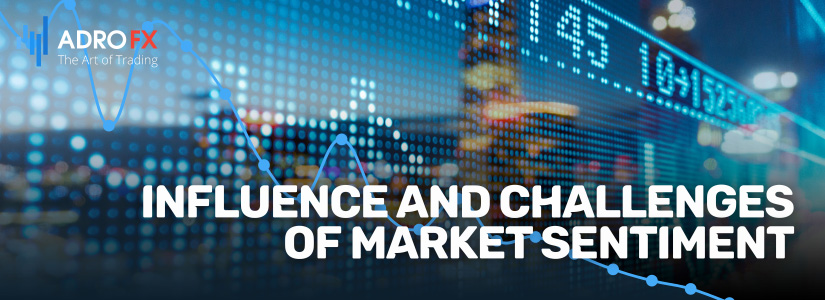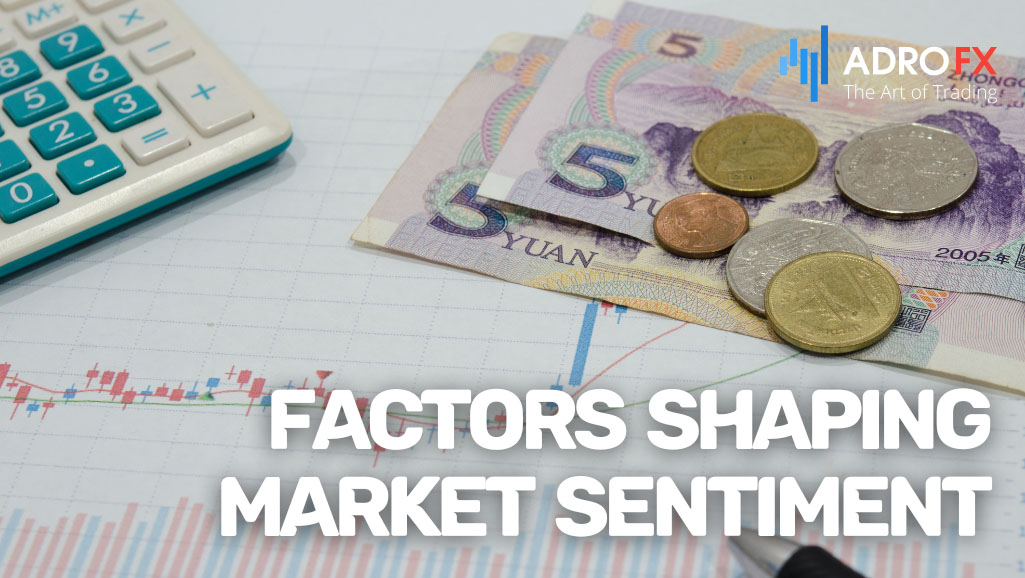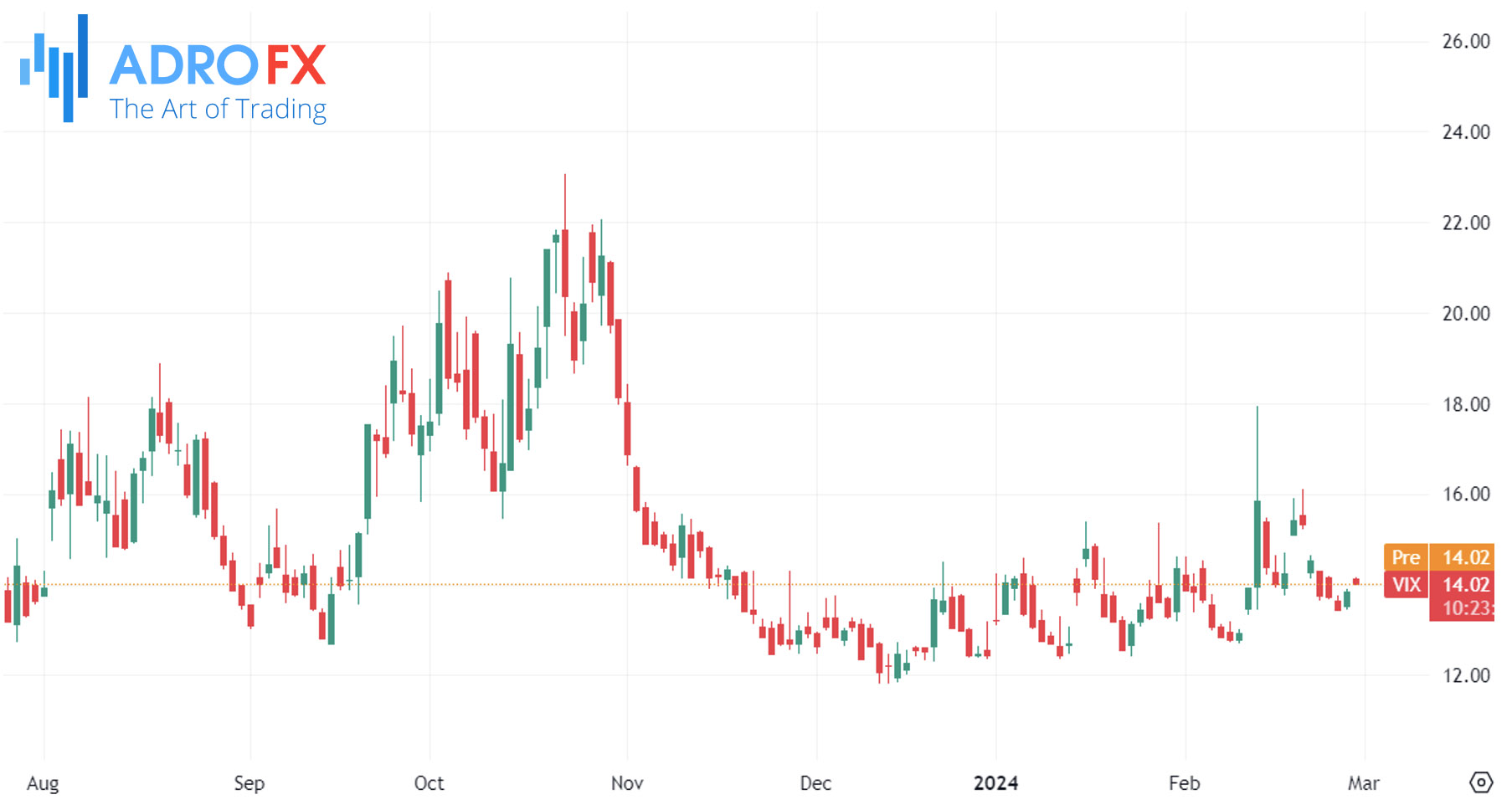Influence and Challenges of Market Sentiment

Navigating the dynamic landscape of forex trading requires a nuanced understanding of various factors that shape market dynamics. At the forefront of these influences is market sentiment, a powerful force that encapsulates the collective mood and perception of traders, investors, and analysts. In this article, we delve into the intricate world of market sentiment, exploring its definition, types, and the profound impact it has on the forex market. While acknowledging its significance, we also scrutinize the limitations of relying solely on market sentiment and advocate for a holistic approach that integrates sentiment analysis with other fundamental and technical strategies. Traders, armed with a comprehensive toolkit, can then adeptly navigate the ever-shifting tides of the forex market, leveraging market sentiment as a valuable guide in their quest for informed decision-making and sustained success.
Defining Market Sentiment
Market sentiment captures the overall attitude and sentiment of market participants, including traders, investors, and analysts, towards a particular financial market or asset. It serves as a reflection of the collective mood and perception, indicating the anticipated direction of price movements. The influence of market sentiment on trading decisions and its potential impact on market trends cannot be overstated.
Two Key Types of Market Sentiment:
- Bullish Sentiment
Bullish sentiment prevails when a majority of market participants hold an optimistic outlook on the future direction of prices. This optimism is characterized by the belief that the market or a specific asset will experience upward price movements. Rising prices, increased buying activity, positive news, and an overall positive economic outlook are commonly associated with bullish sentiment. - Bearish Sentiment
On the contrary, bearish sentiment emerges when most market participants adopt a pessimistic view of the future direction of prices. Pessimists believe that the market or a specific asset will undergo downward price movements. Falling prices, heightened selling activity, negative news, and an overall pessimistic economic outlook are indicative of bearish sentiment.

Factors Shaping Market Sentiment
The dynamics of market sentiment are influenced by a multitude of factors spanning economic data, geopolitical shifts, corporate earnings disclosures, breaking news, and the dominant narratives on social media platforms. Traders and investors strategically wield market sentiment analysis as a pivotal instrument in their decision-making frameworks. A diverse array of indicators and tools, ranging from the Commitments of Traders (COT) report to surveys and sentiment indices, are actively employed to gauge and comprehend the prevailing sentiment within the market.
The comprehension and interpretation of market sentiment carry profound significance owing to its potential to steer market trends and instigate price fluctuations. Contrarian investors, who opt for strategies that diverge from prevailing sentiment, leverage sentiment indicators to pinpoint potential inflection points within the market. It is crucial to underscore that while market sentiment holds intrinsic value, it represents just one facet among a myriad of factors that traders consider when devising their investment strategies. A holistic approach entails seamlessly integrating market sentiment analysis with other analytical methodologies to foster a comprehensive understanding.
The Significance of Market Sentiment in Forex Trading
Navigating the forex trading landscape requires a nuanced understanding of market dynamics, with market sentiment emerging as a significant influence. This force encapsulates the collective mood of traders, investors, and analysts, shaping their perception of a particular financial market or asset. Market sentiment serves as a reflection of the anticipated direction of price movements and holds undeniable sway over trading decisions and market trends.
In the realm of forex trading, the impact of market sentiment is particularly pronounced. A sophisticated comprehension of sentiment becomes imperative for traders striving to make well-informed decisions and navigate the complexities of currency markets. Key facets underlining the importance of market sentiment in forex trading include its role in influencing price movements. Bullish sentiment, characterized by optimism and an expectation of upward price movements, can trigger heightened buying activity, driving prices higher. Conversely, bearish sentiment, signaling a pessimistic outlook with anticipated downward price movements, can induce selling pressure and lead to lower prices.
Contrarian trading strategies come into play when market sentiment reaches extremes. Traders actively seek opportunities by going against prevailing sentiment, identifying potential reversals based on excessive bullish or bearish sentiment levels. Sentiment indicators, such as the Commitments of Traders (COT) report, surveys, and sentiment indices, provide valuable insights into the prevailing mood among market participants. These tools assist traders in determining whether the market leans towards a bullish or bearish bias, contributing crucial information for strategic decision-making.

News and economic events significantly shape market sentiment, with positive economic reports fostering bullish sentiment for a specific currency, while negative news may generate a bearish bias. Traders closely monitor such events to anticipate shifts in sentiment and adjust their strategies accordingly. Risk appetite and flight to safety are also intertwined with market sentiment, influencing traders' preferences for safe-haven or riskier currencies depending on economic uncertainty or geopolitical tensions.
While short-term sentiment fluctuations are common, long-term trends in the forex market are also shaped by fundamental factors such as economic indicators, interest rates, and geopolitical developments. Traders must consider both short-term sentiment dynamics and long-term fundamental factors for a comprehensive understanding of market conditions.
Additionally, the psychological aspect of market sentiment is crucial. It reflects the collective psychology of traders, encompassing emotions like fear, greed, and herd mentality, which can significantly influence sentiment and result in exaggerated price movements. Successful forex traders strategically integrate sentiment analysis as a fundamental component of their overarching trading strategy, recognizing its dynamic and integral role in currency market dynamics.
Key Indicators and Innovative Trading Approaches
Market sentiment, reflecting the collective mood of traders and investors in financial markets, involves decoding various cues for a comprehensive understanding. Economic data, such as GDP growth and employment rates, holds significant sway over sentiment, with positive indicators creating an optimistic atmosphere and concerns arising with high inflation.
News and events, encompassing geopolitical occurrences, economic reports, and central bank decisions, act as potent sentiment shapers. Even unexpected events like natural disasters can disrupt sentiment, particularly in commodity markets. Technical analysis, involving the scrutiny of price charts, aids in comprehending prevailing sentiment through chart patterns, support and resistance levels, and moving averages.
A range of sentiment indicators, such as the Commitments of Traders (COT) report, unveils institutional traders' positioning, while retail trader sentiment on platforms offers insights into market sentiment. Examining market breadth, which analyzes advancing versus declining stocks, provides an indicative measure of sentiment, with more advancing stocks suggesting a positive outlook.
Innovative approaches involve social media and news sentiment analysis, monitoring discussions on platforms like X (former Twitter,) and analyzing news articles for sentiments that impact overall market perception. Options market activity, including the put/call ratio and options implied volatility, signals bearish or bullish sentiment. In the forex market, analyzing currency strength involves assessing how one currency compares to others to reveal sentiment trends.
Patterns such as bullish or bearish formations, including candlestick patterns, offer additional insights, with specific patterns suggesting bullish or bearish sentiment. Market surveys, where traders share their expectations, provide a snapshot of sentiment at a particular moment. Importantly, while these indicators offer valuable insights, they could be more foolproof, and traders often use a combination to interpret market sentiment, considering the context and current market conditions.
Strategies Tailored for Trading Based on Market Sentiment
Trading based on market sentiment involves making decisions and executing trades based on the overall mood or sentiment of market participants. One strategy is news trading, where traders react to breaking news or economic events influencing market sentiment. They monitor news sources, economic calendars, and social media for market-moving events, then trade in the direction of the sentiment created by the news.
Contrarian trading involves going against prevailing market sentiment, assuming that extreme sentiment levels are often followed by reversals. Traders identify overbought or oversold conditions using technical indicators or sentiment gauges and enter trades when sentiment is excessively bullish or bearish, anticipating a reversal.

Sentiment indicators, such as the CBOE Volatility Index (VIX) or the CNN Fear & Greed Index, are used to gauge market sentiment. Traders align their trades with the sentiment indicated by these indexes. For example, a high VIX may suggest a fearful market, indicating potential buying opportunities.

Social media analysis involves monitoring platforms for discussions and opinions related to financial markets. Traders identify trending topics, hashtags, or sentiment analysis tools on social media platforms and trade based on the sentiment expressed by the online community.
Options market analysis entails analyzing options market activity, particularly large bets or changes in open interest, to gauge market sentiment. Traders pay attention to options market data, including the put/call ratio and implied volatility, and execute trades based on the sentiment inferred from these indicators.
Event-driven trading revolves around significant events, such as earnings reports or geopolitical developments, that can shift market sentiment. Traders plan trades around key events, reacting to changes in sentiment driven by the outcomes of these events.
Market breadth analysis involves assessing the overall health of the market by analyzing the breadth of participation, such as advancing vs. declining stocks. Traders use market breadth indicators to gauge sentiment and trade in alignment with the overall breadth of market participation.
Macroeconomic analysis considers broader economic factors and global trends to determine overall market sentiment. Traders analyze macroeconomic indicators, such as interest rates, inflation, and geopolitical events, and trade based on the anticipated impact of these factors on sentiment.
Remember that trading based on sentiment involves risks, and it's essential to combine sentiment analysis with other forms of analysis and risk management strategies for a well-rounded approach. Additionally, staying disciplined and avoiding emotional reactions is crucial when trading based on market sentiment.
Is Relying Solely on Market Sentiment a Viable Approach in Forex Trading?
Engaging in forex trading exclusively based on market sentiment presents a formidable challenge. While recognizing and incorporating market sentiment is pivotal, relying solely on it has inherent limitations. Here's a breakdown of the reasons behind this perspective:
- Dynamic Nature of Sentiment
Market sentiment is highly dynamic, undergoing rapid changes influenced by factors such as economic data releases, geopolitical events, and unexpected news. Depending solely on sentiment may result in reactive rather than proactive trading. - Risk of Herd Mentality
Blindly following market sentiment without independent analysis exposes traders to the risk of herd mentality. A large number of traders reacting without thorough analysis can lead to crowded trades and increased market volatility. - Lack of Precision
Market sentiment indicators offer a general overview of the market mood, but they may lack the precision needed for specific trading decisions. Combining sentiment analysis with technical and fundamental analysis provides a more accurate insight for traders. - Overlooking Fundamentals
Relying only on sentiment might cause traders to overlook fundamental factors with a lasting impact on currency values. Economic indicators, interest rates, and geopolitical stability should complement sentiment analysis for a comprehensive strategy. - Unpredictable Events
Unexpected events can significantly impact market sentiment, and relying solely on it may not prepare traders for unforeseen developments. A well-rounded trading strategy considering various factors provides a more robust approach.
While market sentiment is a valuable tool, successful forex trading often involves a well-rounded strategy. Combining sentiment analysis with technical analysis, fundamental analysis, risk management, and other strategies enhances a trader's ability to make informed and strategic decisions in the dynamic forex market.
Final Thoughts
In conclusion, market sentiment is a powerful force in forex trading, influencing decisions and shaping currency market dynamics. This exploration uncovered fundamental aspects, emphasizing the need to integrate sentiment with other analyses for a comprehensive approach. Understanding and interpreting market sentiment are imperative, and successful traders strategically leverage sentiment indicators to identify market inflection points. The exploration into its significance unveiled key facets, including its impact on price movements, contrarian trading opportunities, responses to news and events, and its influence on short-term and long-term trends. The psychological aspect of market sentiment, diverse strategies, and the challenges of relying solely on it were addressed. In essence, market sentiment is a dynamic and integral element in forex trading, requiring traders to adapt and navigate its complexities alongside other analytical approaches.
About AdroFx
Established in 2018, AdroFx is known for its high technology and its ability to deliver high-quality brokerage services in more than 200 countries around the world. AdroFx makes every effort to keep its customers satisfied and to meet all the trading needs of any trader. With the five types of trading accounts, we have all it takes to fit any traders` needs and styles. The company provides access to 115+ trading instruments, including currencies, metals, stocks, and cryptocurrencies, which make it possible to make the most out of trading on the financial markets. Considering all the above, AdroFx is the perfect variant for anyone who doesn't settle for less than the best.







